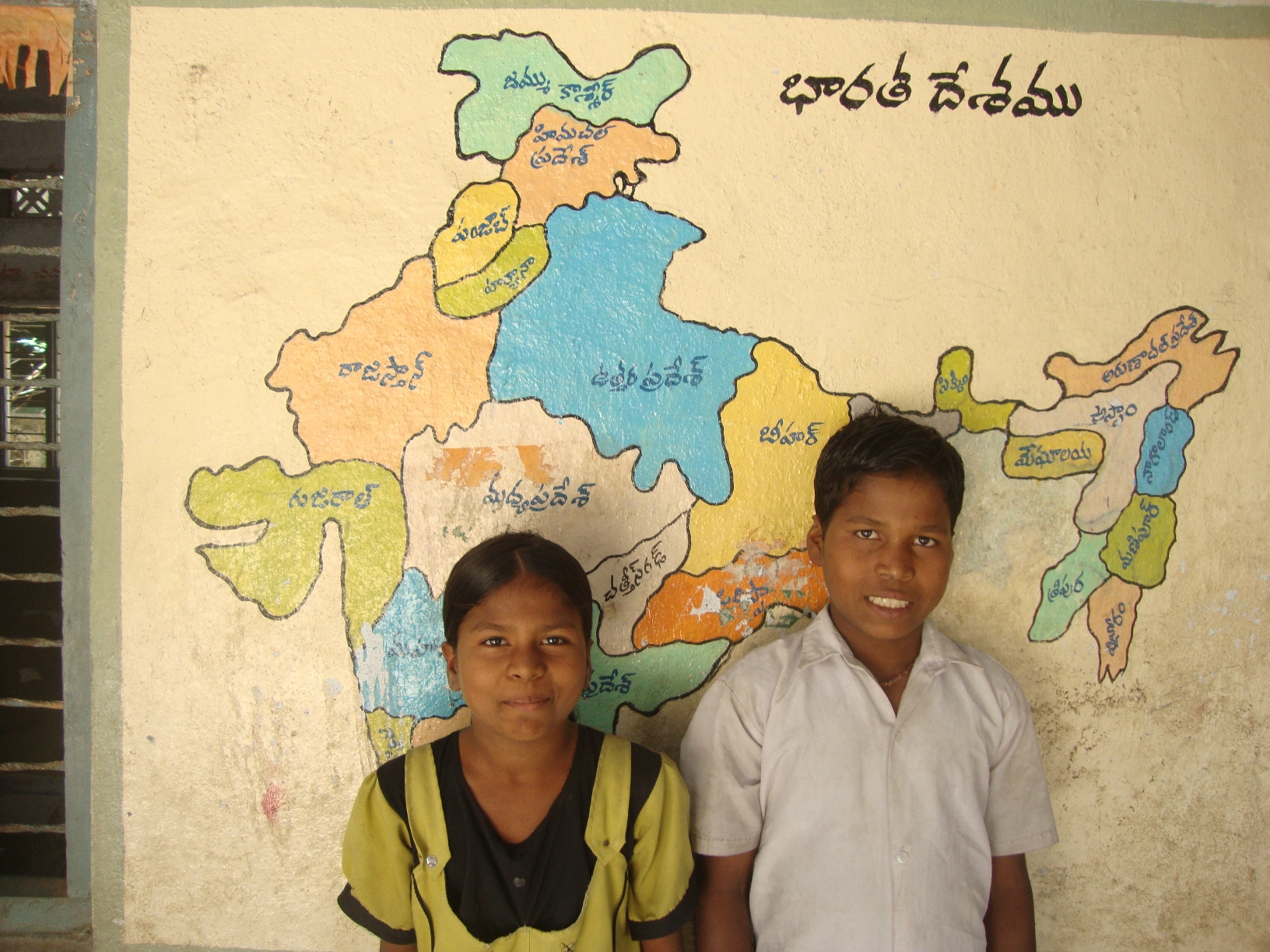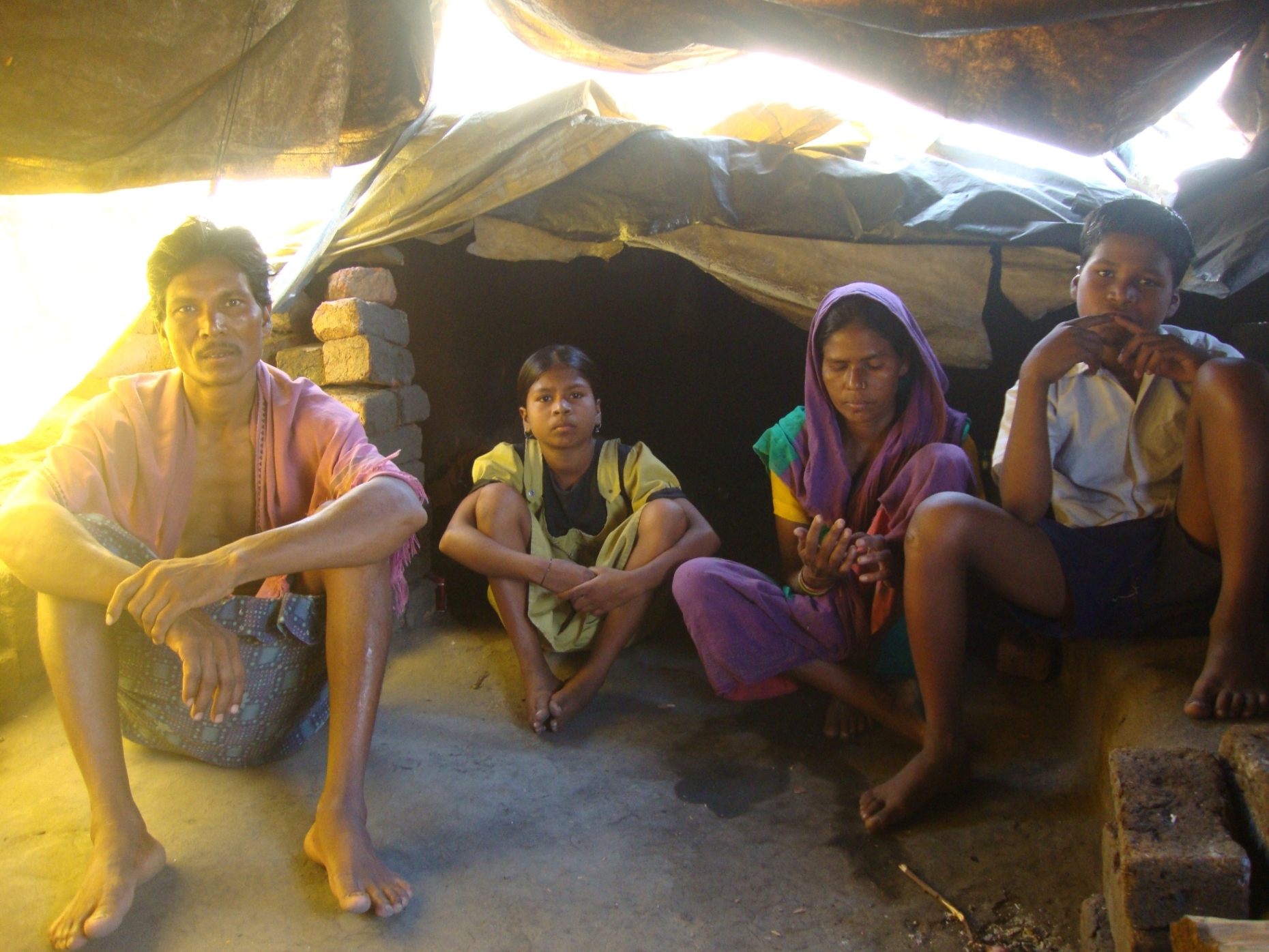This piece was carried in Counterpunch in its weekend edition 19-21 October 2012.
Web link: http://www.counterpunch.org/2012/10/19/children-of-the-migration-in-india/
Web link: http://www.counterpunch.org/2012/10/19/children-of-the-migration-in-india/
Education and the Quest for Survival
Indian Children of the Migration
Khageswar Benya and Panchami Benya from Muribahal block of Balangir district of Odisha, an Indian state, are the children of regularly migrating parents. For last five years they have been accompanying their parents almost regularly who have migrated to work in brick kilns in Waltier and Hyderabad in Andhra Pradesh like places. Last season (2011-12) they came to Quthbullapur mandal of Rangareddy district in Andhra Pradesh to work in brick kilns. Both Khageswar and Panchami studied in a school in Odia medium and successfully completed class 6 and class 5 respectively in Andhra Pradesh itself. Now they are back in their villages in Odisha and have been promoted to the higher classes. Father Dasmu Benya and mother are marginal farmers who do not have adequate sources of livelihood to manage their family. “We have two marriageable daughters to marry for whom we have to earn working in the kilns in other states.” said the couple.
Forced migration
The western part of Odisha is characterised by distressed labour migration to other states and to coastal best of Odisha in search of employment. Districts like Balangir, Nuapada and Kalahandi are part of the infamous KBK region (Undivided Kalahandi, Balangir and Koraput districts) of the state which is known for high incidence of poverty and occasional reports of child sale and deaths due to malnourishment and starvation. As per 55th NSSO survey conducted in 1999-2000, the poverty in undivided KBK region was exorbitantly high at 87.14%. The area has a high Scheduled Tribe and Scheduled Caste population. In Balangir district 20.6% people are STs and 17% are SCs; Kalahanddi has 28.7% of STs and 17.6% SCs, and Nuapada has 34.7% of STs and 13.5% of SCs. (Census 2001)
The faltering agriculture resulting from continuous droughts, uneven land distribution, loss of forest, caste discrimination, lackadaisical performance of the government schemes like Mahatma Gandhi National Rural Employment Guarantee Act (MGNREGA), non-inclusion of many deserving beneficiaries under the PDS (Public Distribution System) system so forth have been the ‘push’ factors forcing people to go out of state in search of employment. People go with families or individually to work in brick kilns, agricultural fields, construction sites, pull rickshaws, work in tea gardens etc. The dominant trend in Balangir and Nuapada districts is family migration, where they go to work in brick kilns in states like Andhra Pradesh, Tamil Nadu, Karnataka etc, so also to Bhubaneswar and Cuttack in Odisha.
Quantifying the migrant children
In absence of proper tracking mechanism of the migrant workers and children, it’s quite difficult to get their exact number. The government data provided by labour offices (Source: State Assembly questions, 2011) suggest that there are 190 labour contractors in four districts-Balangir, Kalahandi, Nuapada and Bargarh. Under the Interstate Migrant Workmen’s Act 1979, the labour contractors have sought permission to take the following numbers of migrant labourers to other states. In Balangir it is 33,035, in Nuapada it is 4786, in Kalahandi it is 4256 and in Bargarh it is 596. The real labourers which migrate are too high; many of whom are taken illegally.
The UNDP research paper titled ‘Migration and Human Development 2009’ quoting sources from Action Aid suggest that about 2 lakh people migrate from Western Odisha to Andhra Pradesh alone (ActionAid 2005). And an unpublished survey done by the district administration of Nuapada throughout the district in 2008 suggests that 30000 people migrate from the district (Source: Abani Panigrahi, Lok Drishti, a NGO based in Nuapada district). If 11% are considered to be the percentage of children in the age group of 6-14 out of the total, the number comes about 23,000 in Balangir and Nuapada alone. The real number of the children of this age group in Blangir, Nuapada, Kalahandi and Bargarh districts could well be in the range of 25,000 to 30,000 or more.
A study done in 2011-12 by International Labour Organisation (ILO) with the help of Aide Et Action India (AEAI), a civil society organisation in 100 villages spread across three districts namely Balangir, Kalahandi and Nuapada suggest that about as many as 56 percent of the total migrant workers go to Andhra Pradesh, 12% go to different areas inside the state, 8% to Chhatisgarh and 5% to Chennai. As many as 79 percent people go to work in brick kiln sectors.
It may sound bizarre, but the fact is that many of the children accompany their parents as children labourers in brick kilns. In a typical system of labour unit, called Pathuria, a child constitutes its integral part in brick kilns. Advance payment is given to the Pathuria by middlemen on behalf of their out of state employers. Money is also given for the labour of the child!
Initiative to protect education of migrant children
After Right to Education law came into effect in 2010 the challenge for providing education to these migrant children has come to fore. This piece will focus mainly on the initiatives taken to educate Odia migrant children in Andhra Pradesh and Tamil Nadu. In 2002 providing education to the Odia children in Andhra Pradesh in Odia medium by the Odia teachers was experimented by some Civil Society organisations (CSOs). Eventually worksite schools were also started in Tamil Nadu for the Odia children.
These exercises were successful and have been expanded to a massive scale by the Andhra Government in 2011-12.
The season of migration stretches from October/November of a year to June/July of the next year. “In this season (2011-12) 727 worksite schools were operated where 21,070 inter-state migrant children from various states like Odisha, Chhatisgarh, Maharatsra, Tamil Nadu etc received education in their mother tongue” say Madhusudan V, Officer on special duty (OSD), Dept of School Education (SSA), Andhra Pradesh.
In 2011 a detailed survey was undertaken in AP by the government in association with about NGOs. The government entered into a MoU with Aide Et Action India (AEAI), which has expertise on running schools for migrant children, to steer the process. The survey captured more than 59, 000 migrant children-both intra-state and inter-state migrant children. A total of 34,997 intra-state migrant children and 21,070 inter-state migrant children have been provided education in 2011-12.
22 out of 23 districts have been covered under the initiative. In each district a group of NGOs have been identified to run the schools. Two types of schools have been worked out. Seasonal hostels model to accommodate the children of intra-state migrant at the source and worksite schools for the children who migrated both from within the state and from out of state.
Education to Odia students
In 2010-11, 377 Odia migrant children were provided education and in 2011-12 the number is 6453 in AP. In Tamil Nadu, 430 Odia children were taught in 2010-11 and in 2011-12 the number remained the same i.e. 430.
Providing education to the inter-state migrants in their own language was a big challenge. Inter state coordination at the government level and the NGO level was established between Andhra Pradesh and Odisha and Tamil Nadu and Odisha.
AEAI, which has also units functioning in Odisha, identified eligible Odia youth to teach in AP and Tamil Nadu. Books were sent by the NGO from Odisha. The government agencies at different levels were approached to supply books.
In AP, wherever possible, the local telugu school was directed by the administration to spare space for the Odia children where they can be taught. The Dundigal primary school in Quthbullapur mandal of Rangareddy district where Khageswar and Panchami studied is a case in point. In other cases make-shift arrangements were made right near the worksite itself so that children can read. The children in the regular schools were provided with mid-day meals. However the same was missing in schools which were run in the premises of the worksite. The arrangement is similar in Tamil Nadu also.
After the classes were over, annual examinations were held for the Odia students in the worksite schools which recognised by the host governments. The primary education departments of both the AP and Tamil Nadu governments issue certificates. The department of School and Mass education of Odisha has issued an notification to acknowledge the certificates issues by AP and Tamil Nadu and admit the children to the higher classes in their parent schools. The migrant Odia teachers come back to the state in July/August to help the children in, what they call it as, ‘mainstreaming’ into their parent schools.
Challenge of quality remains
While the initiative is noteworthy as it prevents the children from missing the school for seven months during migration period and eventually dropping out, institutionalisation of the process and quality of education remain as challenges. Madhusudan V says ‘What remains challenge is the quality education. The problem with migrant children is that many of them are drop outs or out of school for many days. And in some cases they are not admitted into any school system despite being eligible. In such cases ensuring quality becomes quite difficult.” Sridhar Meher of AEAI says “What we are doing is mainly engaging the students. A lot more needs to be done.” Suresh Gutta of AEAI adds “These are initial years of our experimentation. Gradually we are inching toward providing more meaningful education.”
The institutionalisation of the inter-state coordination also remains as challenge. The selection of teachers, training teachers, sending books, mainstreaming are all now done on an ad hoc arrangement. This year hardly the migrant children got any book from Odisha government. They had to manage with the photocopies of the books. Madhusudan V blames the Odisha government for lack of coordination. “We have gone more than half way in educating the migrant Odia children. The response of Odisha government is not encouraging.”
Krishna Gopal Mohapatra, the Special Project Director (SPD) to Sarva Siksha Aviyan (SSA), Odisha admits the gaps. “Inter-departmental coordination in our state is quite necessary to make this happen. It can be done at the governmental level. The labour department has to provide the figures of the migrant families and children.”
Child labour continues
Despite the attempt to educate the migrant children, the issue of children working in the brick kilns remain as a big concern. “The elderly children continue to work in the kilns along with studying in the schools. So they are unable to read anything after going back” said a migrant teacher in condition of anonymity. Any child above the age of six works in the kilns. The labour department officials of AP remained tight lipped on the issue.
A tripartite MoU among the labour departments of AP, Odisha and GoI has been signed. It aims to protect the rights and entitlements of migrant labourers coming from Odisha to AP and to develop an action plan for the migrant children. The action plan is likely to ensure the provision of education and prevent them from working in hazardous industries. This is an International labour Organisation (ILO) initiative. AP took a long time to sign the MoU. Sources suggest it was due to the pressure from these unorganised sectors that government was hesitant to sign.
In order to protect the migrant children from being employed in the hazardous industries in brick kilns and construction sectors and to protect their rights to quality primary education, the central government and National Commission for Protection of Child Rights (NCPCR) should play a major role.
Pradeep Baisakh is a media fellow of National Foundation of India (NFI) for the year 2012. He has written extensively on right to work, transparency law, environment and forest issues, India polity and Constitution and women issues. This article is written as part of the fellowship work. He can be reached though e mail:2006pradeep@gmail.com



